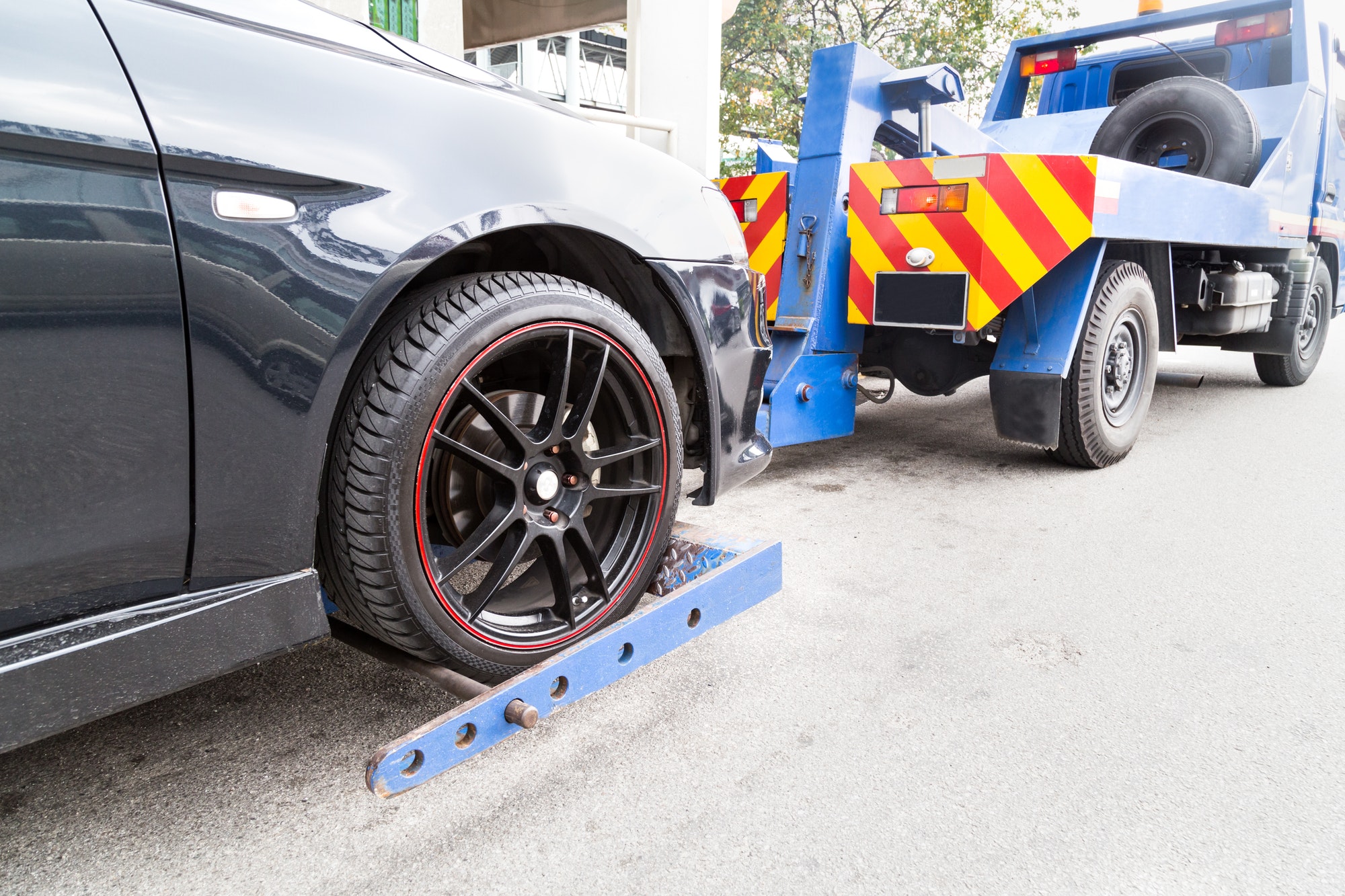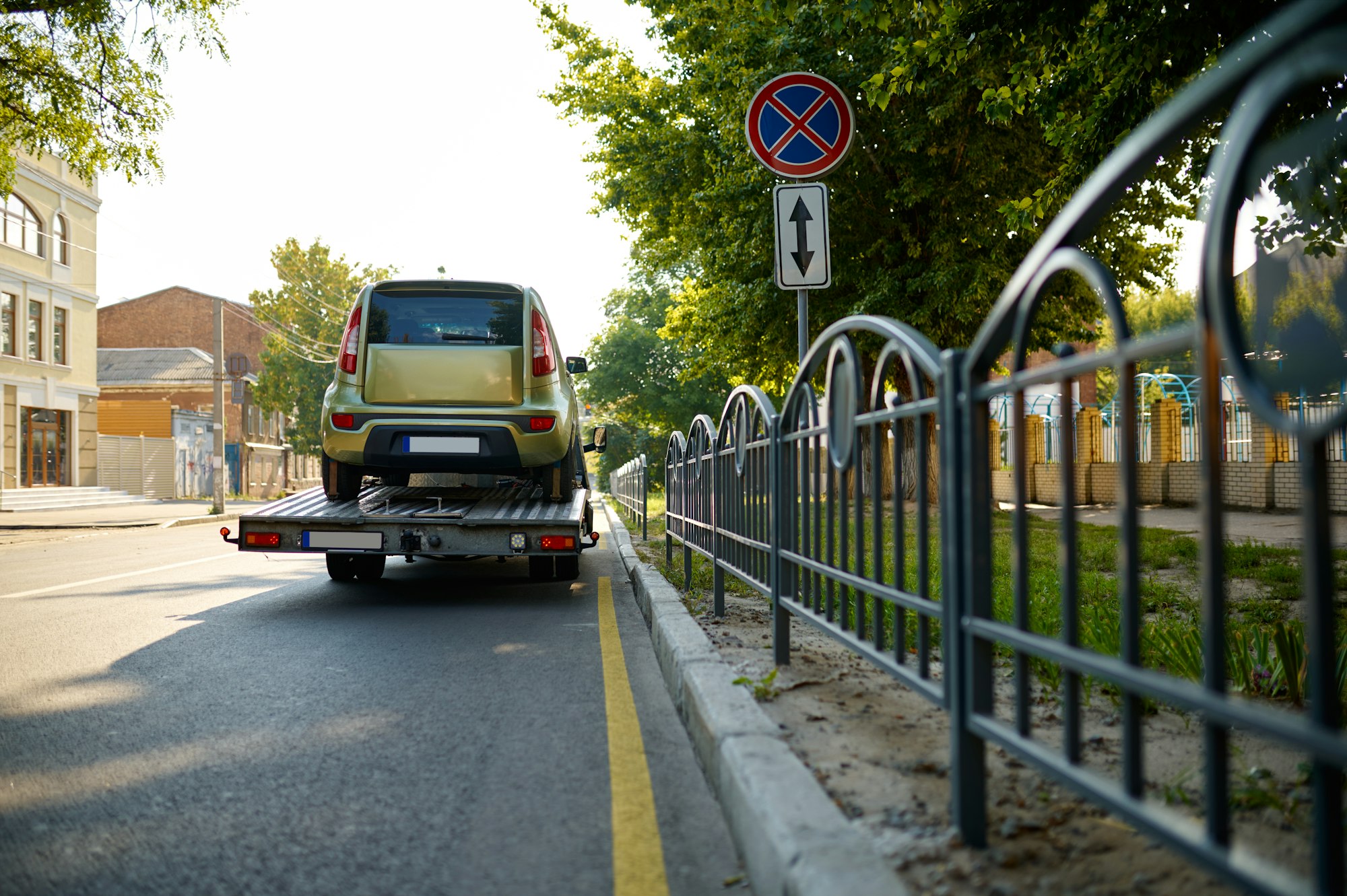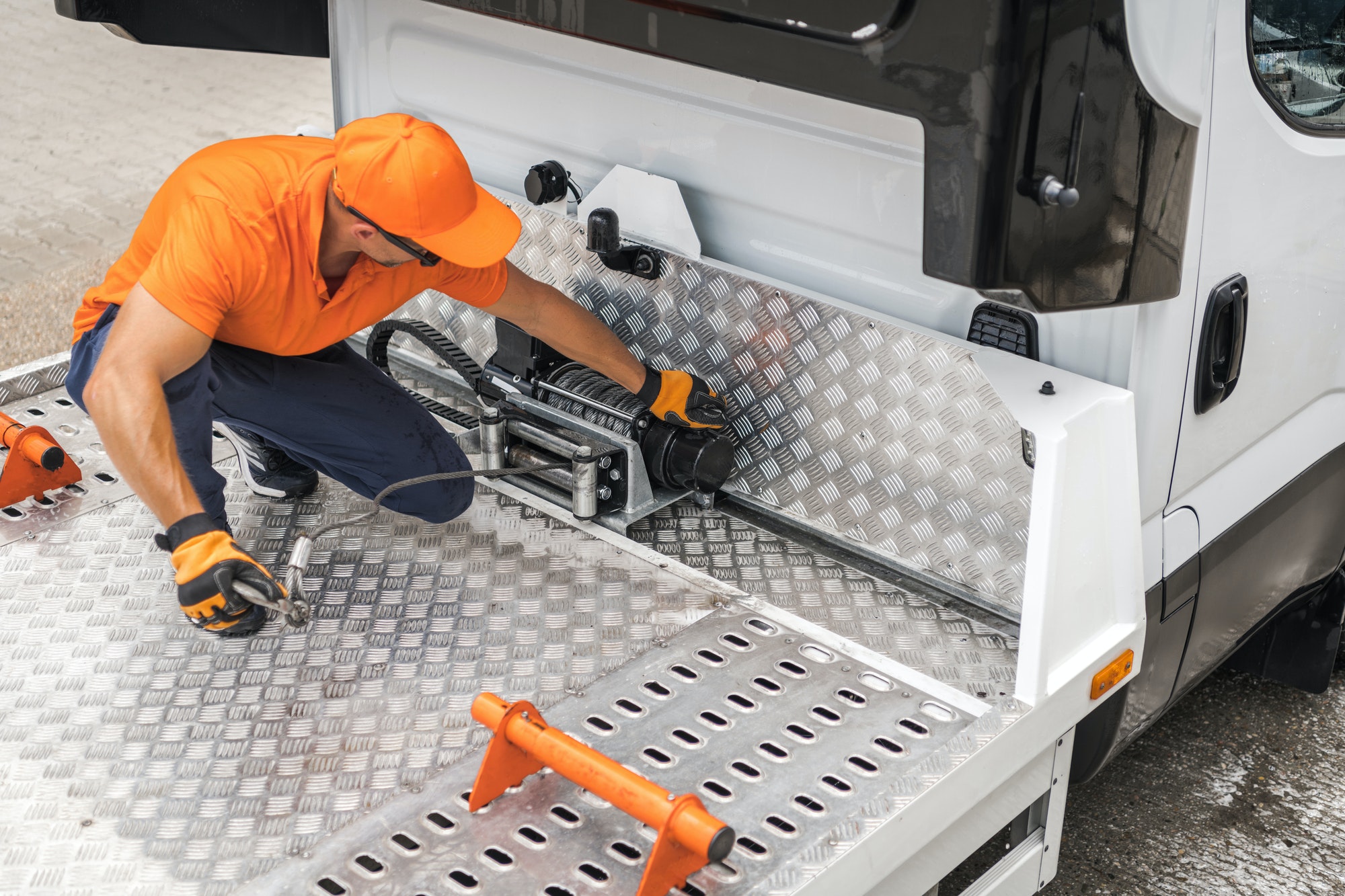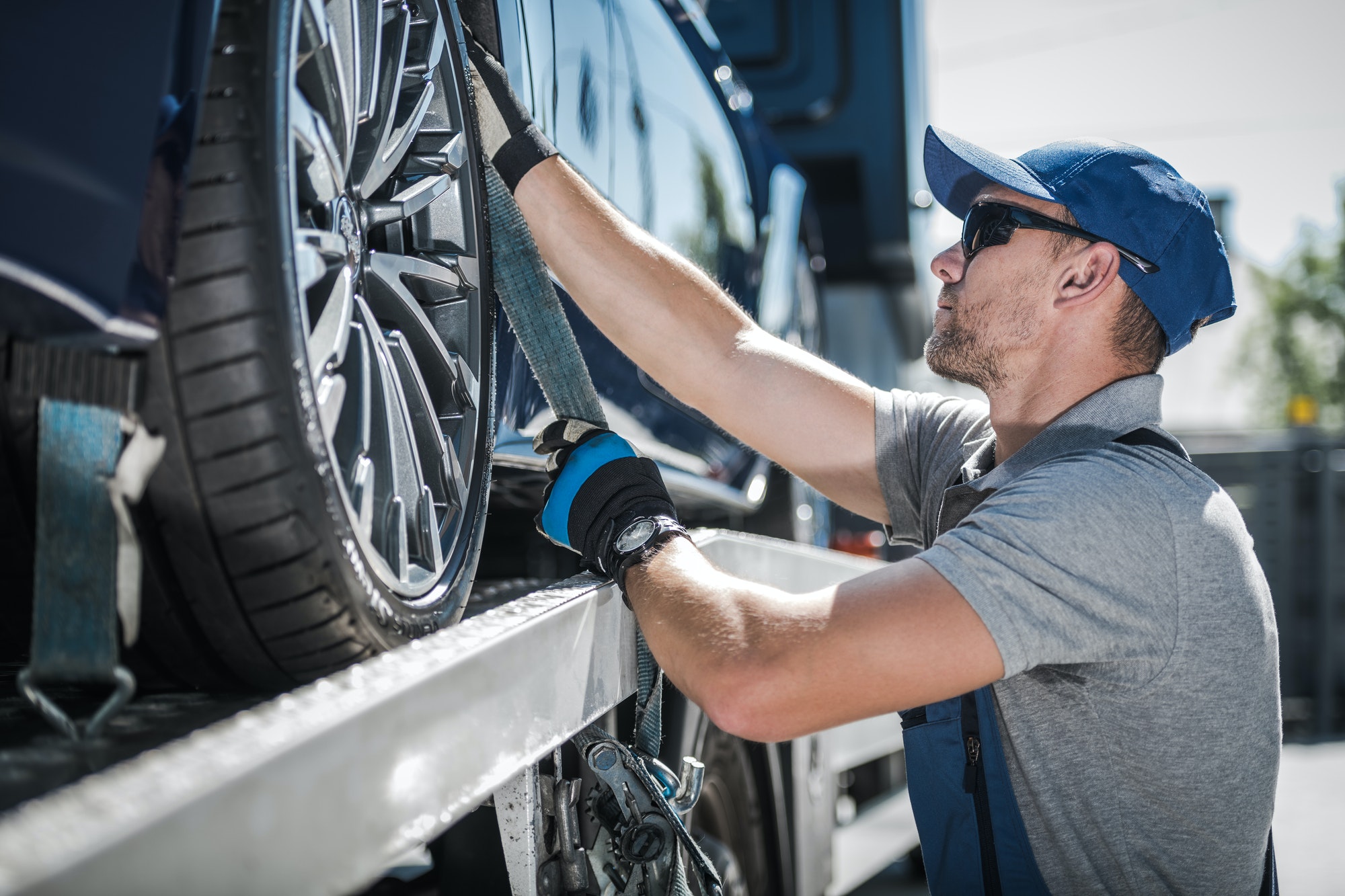Do you have a flat tire?
Table of Contents
ToggleA flat tire can happen to anyone simultaneously; only some are prepared for it. Every driver dreads getting a flat tire, but you might be unable to prevent it forever. According to one estimate, 220 million tires go flat each year.
A flat tire can be an unwelcome aspect of your day, whether due to a sudden leak caused by road hazards such as nails or potholes or a steady leak caused by sidewall deterioration. One flat tire might leave you stranded on the side of the road. However, with Discount Auto Towing, you don’t have to worry about a flat tire in St. Paul.
A flat tire can derail your whole day, but don’t worry; our emergency tire service is available to assist you in your need. Our service technicians will work hard to ensure you’re on the road as soon as possible, from replacing a blown-out tire with a spare to fixing punctures and more.
Discount Auto Towing’s emergency tire services are available 24 hours a day, seven days a week at (651) 917-0192. Never allow a flat tire to stop you from getting on with your day. Highly qualified and experienced personnel are available to provide you with excellent tire maintenance guidance.
You won’t have to wait a long time for assistance!
Why Would You Need An Emergency Tire Service?
Repairing A Punctured Tire
Our emergency tire service offers mobile tire repair. A service professional will examine your tire to see if it can be repaired safely. If a nail or screw has punctured your flat tire, they can fix it by plugging it. If you don’t have a spare, they may tow you to the nearest accessible (or preferred) service station within your towing distance.
Installation Of New Tires
If you need a new tire, choose from the available inventory. There is a large selection of major tire brands for you to choose from. You can replace your flat tire with a new one in no time.
Installation Of Donut/Spare Tires
If you have an extra or donut tire, tire service repair specialists can install it immediately. We will even help replace a blown-out tire with one from your inventory.
In a repairable puncture, the technicians can patch the tire.
Tire Replacement Equipment On Wheels
With our cutting-edge facilities, our tow vehicles are dispersed across the major cities to provide exceptional tire service. Repairing difficulties like a tear or hole in the tire’s sidewall and any other emergency tire service unique to your case are all part of the rendered services.
What You Should Know About Wheel Alignment
The process of wheel alignment can be perplexing.
Unlike other, more evident automotive defects, a car with inadequate suspension alignment will not illuminate a warning signal on your dashboard. It will not be visible by looking closely at your vehicle.
Our experts are committed to assisting you with understanding wheel alignment. In some cases, wheel alignment is an integral part of emergency tire service.
If you have symptoms of a wheel alignment problem, have had suspension component adjustments, or have gone more than six months since your last wheel alignment, you must align your wheels during the tire service.
Your wheels may need to be aligned if:
- When you turn, you feel a vibration.
- The steering wheel swivels left and right.
- When driving on a straight route, the steering wheel is more complex.
- Your tire tread is unevenly worn.
An alignment check offers the following features:
- Evaluation of components of the steering and suspension.
- Tires are examined for size, inflation, and condition.
- Your tire alignment is compared and checked against the manufacturer’s recommendations.
We Offer A Tire Replacement In An Emergency
Our knowledgeable service experts also offer helpful tips to ensure you get the most out of your vehicle.
One of them is knowing the correct amount of pressure that a tire requires. In a nutshell, this aids in achieving optimal performance and longevity. Our towing professionals have the expertise and equipment to arrive on time and provide efficient, prompt roadside tire repair or high-quality replacement. Our professional response team consists of well-trained and experienced specialists in delivering flat tire roadside help for all types of vehicles.
When changing or repairing your flat tire, we will help determine if your vehicle is safe to drive. When our team finishes the emergency tire service, they will ensure all your wheels are properly torqued and filled.
When a tire goes flat, it doesn’t matter what time of day it is; our emergency tire service is available 24/7. Our towing crews are constantly ready and eager to provide mobile tire repair within minutes. Emergency tire service ensures a quick and convenient flat tire repair, which includes a tire change with your inflated spare.
Whether you have a working spare tire or not, it’s not a barrier anymore; we’ll get you out of your jam in no time.
How Are You Ready for a Flat Tire?
Waiting until your tires are in bad shape is something you shouldn’t consider doing.
Make a strategy for what you’ll do if you get a flat tire. Having an extra tire and the necessary tools to change it would be best. A jack, lug wrench, wheel wedges, gloves, and a flashlight are all required.
You shouldn’t be in a situation where you must change a tire for the first time. It can be challenging and add to the stress of the situation. Practice changing your tire in your driveway at home so you’ll be ready to do it in a more complex problem.
Simple preventative measures will help you avoid a flat tire. Check your tire pressure regularly to ensure it is within the recommended pressure range for your tires. Inspect your tires regularly for cuts, bubbles, cracks, punctures, and other damage. A car mechanic should address these issues right away.
Remember that the front tires wear out more quickly than the back tires. Front tires, after all, bear more weight and are subjected to more stress from steering and braking. Rotating your tires might help you keep all four of them wearing evenly. Your owner’s guide will tell you the frequency with which you should get your tires rotated, but a basic rule of thumb is every six months.
Tires wear down over time, even with rotation, and have an expiration date. Getting new tires when needed will help you prevent getting a flat. Tires typically last 60,000 miles, but you may need to replace them sooner. Look at your tire’s wear bar, located in the tread’s center. If the wear bar is in line with the tread on your tires, they have worn down severely and should be replaced.
Also, be aware of warning indicators that your tire may be about to blow out. There could be an issue with the tires if your car rattles when driving. A hissing sound from your tires could indicate a leak, resulting in a flat tire. Bring your automobile to a tire professional immediately if you detect these indicators.
What Should You Do Following A Flat Tire?
You have a flat tire if you hear a grinding noise from your car. Your automobile may begin to slow down, and the steering may seem skewed. Driving with a flat tire can damage your vehicle and risk your and others’ safety.
Put on your emergency lights and slow down if you get a flat tire. Pull over whenever you see an open stretch away from the traffic. It’s best to change your tire away from incoming traffic.
It would be best if you prioritized safety at all times. Get off the road and into a well-lit place, lock the doors, dial our 24-hour emergency tire service contact number, and wait.
If moving your automobile off the road is difficult or impossible, walk away and wait for aid at a safe distance. Staying behind or to the side of your immobilized vehicle is not a good idea. We will swiftly dispatch a truck to your location and get your car back on track without delay with properly functioning tires.
How To Change A Flat Tire On Your Own
If you’ve got a DIY thumb, you may consider changing the tires independently. Here are some pointers to help you change a flat tire on your own:
- Place the wheel wedges appropriately to keep your car from rolling. If you’re changing a front tire, put it behind the back tires. If you’re changing a rear tire, put it on the front tires.
- Remove the wheel cover or hubcap from your flat tire if you have one.
- Turn the lug nuts on your flat tire counterclockwise with the lug wrench to loosen them.
- Lift the flat tire roughly six inches using the jack.
- Remove the lug nuts from the wheels.
- To remove the tire, grab it and pull it toward you.
- Set the tire rim with the lug bolts to install the spare tire.
- Replace the lug nuts and tighten them by turning them clockwise.
- Reduce the car’s height until the tire reaches the ground (but does not yet sustain the entire weight).
- With the wrench, tighten the lug nuts.
- Remove the jack and ultimately lower your car.
- Before you drive, double-check that your spare tire is properly inflated.
Remember that your spare tire isn’t a permanent solution; it’ll only take around 70 miles. As a result, you’ll need to get your automobile to a tire shop as soon as possible to get a new tire.
Whenever you take your car to the shop, ask the mechanic to look for signs of wear on your other tires. Fortunately, taking the proper precautions can help you reduce the severity of a flat tire. You can even reduce your chances of receiving one in the first place.
Consider Calling For Roadside Assistance
Only some people have strong DIY skills. Stress and panic in such a situation can also make it impossible for some car owners to change a tire. In such cases, it is best to call for roadside assistance.
It’s not easy to change a flat tire, especially if you’ve never done it before and don’t know the difference between a blowout and a puncture or a leak. However, replacing a tire on the road is difficult and dangerous if you don’t have the correct safety equipment (and it’s nearly impossible if you don’t have the right tools). This is where emergency tire service comes into play.
Our emergency tire service is just a call away!
Contact Our Emergency Tire Service Team
It is standard to get a flat tire. They can happen while driving or after you’ve parked your car and discovered a flat tire. You’ll get a flat tire when your tire is cut, leaks around the rim are punctured, or has a malfunctioning valve.
If you have a flat tire while driving, stop at a safe location with enough space to change or repair your flat tire. If you discover a flat tire on your vehicle while parked, fix it before driving away.
Avoid waiting hours for your tire to be fixed or changed. If you’re looking for a quick and trusted emergency tire service, call us at (651) 917-0192. Our towing service provides effective and immediate roadside assistance.






